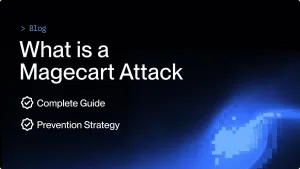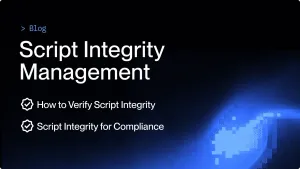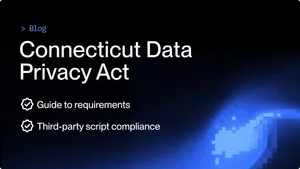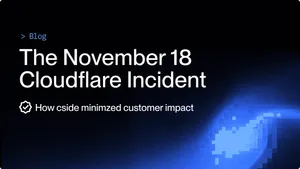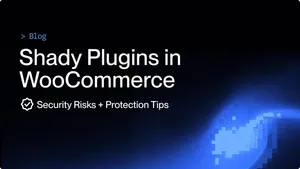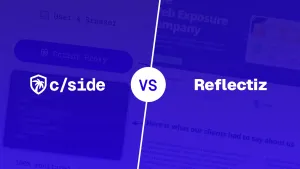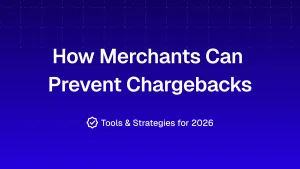In This Blog:
- What Changed From VDMP/VFMP to VAMP (2025)
- Why Indemnification Doesn’t Protect Your VAMP Ratios
- Methods To Lower Your VAMP Ratio
- Penalties for High VAMP Ratios
For years providers of fraud and dispute management software used the statement “we’ll indemnify your successful chargebacks” as a safety net for their customers. If a dispute slipped through, the provider would reimburse you. And that is a good approach to protect your cashflow, however not your risk exposure. With today's VAMP ratio thresholds focusing on risk, those indemnification strategies don't protect the merchant anymore.
“A lot of indemnification strategies don’t work anymore with the new numbers. VISA’s requirement is 0.9% for merchants. The acquirers have to stay below 0.5% so many of the acquirers are adding another compliance level requiring merchants to be below 0.5%”
— Zak Matthews, Solutions Engineer, Chargebacks911
What Changed: From VDMP/VFMP to VAMP

Previous to VAMP, the TC40 didn't live in your ratio. Alerts haven't changed, the way the ratio is calculated has.
VAMP (Visa Acquirer Monitoring Program) tracks the rate of fraud and disputes against your processed volume. It penalises both the acquirer and the merchant for failing to meet certain thresholds related to disputed transactions. It replaces Visa’s former monitoring programs VDMP/VFMP and combines them into one rate that monitors fraud and chargebacks for acquirers and merchants.
TC40s are issued when the cardholder notifies their bank of a ‘not me’ transaction, right or not.
TC15s are are all the successful chargebacks, both fraud and non-fraud related ones .
TC05s are all the monthly settled transactions.
Two crucial observations:
1) It's volume based and not $$ based. A $10 dispute counts the same as a $10.000 dispute
2) It counts the disputes whether or not a provider indemnifies you. Meaning it will increase your VAMP ratio regardless.
Merchants are expected to stay ≤ 0.9% and many acquirers impose even tighter internal limits because they must stay below the ≤ 0.5% as a network. This means that a merchant at 0.8% may still be in violation of their acquirers policy, even if they are technically under the VAMP ratio threshold of ≤ 0.9%.
Lets do a sample VAMP calculation
Say you process 1,000,000 transactions per month and you incur 2,800 TC40s and 3,500 TC15s. Your VAMP ratio will be (2800+3500)/1,000,000= 0.63% meaning you’re still above the acquirer threshold of ≤ 0.5% (at risk of penalties) regardless if you use an indemnification strategy.
Why Indemnification Doesn’t Protect Your VAMP Ratios
- Indemnification fixes losses, not ratios: getting reimbursed for a chargeback does not remove the TC40s and TC15s from the numerator which increases your VAMP ratio and triggers fines, monitoring programs and potential termination
- It incentivises the wrong behavior: Some vendors only pay when a dispute becomes an official chargeback. This means merchants will let alerts turn into chargebacks so they can claim indemnity, but in the meantime blow up their TC40s and TC15s.
- The network is indifferent to who pays the bill: VAMP and issuer fraud reports count signals (alerts), not settlements. Whether your provider, your acquirer or you pay the fees is irrelevant to the network's view of your risk profile.
- Acquirers will pressure you: The acquirer must keep their ratio under the VAMP threshold of ≤ 0.5%. If your VAMP ratio is 0.7% (which is below the 0.9% threshold for merchants) you become a portfolio risk. That could trigger additional compliance, reserves, volume throttling or even offboarding.
- Trying to increase acceptance rates by using indemnification strategies: Lowering your fraud thresholds for transactions because they are indemnified anyway can be dangerous especially when the team managing acceptance rates may not understand the VAMP regulations and setting your organisation up for significant fines.
So How Do You Lower Your VAMP Ratio?
To manage your VAMP ratio you have to reduce the numerator of TC40s and TC15s. This means shifting your investments from reimbursement to pre-dispute blocking solutions like the one of cside and Chargebacks911.
1) Lower your TC15s with RDR (Rapid Dispute Resolution) and CDRN (Chargeback Dispute Resolution Network). This prevents a dispute from progressing to a full chargeback and potentially becoming a TC15 (dispute code), but they do not prevent the issuance of a TC40 (fraud report).
2) Lower your TC40s with cside chargeback evidence solution for pre-dispute blocking and and cancel out the initial dispute request.
A High VAMP Ratio Hurts Your Business
If you breach your VAMP ratio, it's 6-8 dollars per TC15, if you’re over 0.7% it will be even higher and VISA keeps changing the fees. Moreover, that 6-8 dollars is not covered by any indemnification or insurance. Indemnification will always be more expensive than representation and if you’re worried about your VAMP ratio or don’t know it, it's time to make the business case.
Prevention Beats Reimbursement
Net-net: indemnification solved the pre-VAMP era problem of getting your money back. VAMP is today's pain for acquirers and merchants. Staying below the ratios will determine if you can keep processing at all. To achieve that you need a proven pre-dispute blocking solution.
FAQ
What is the VAMP ratio and why should merchants care about it?
VAMP is Visa’s system for tracking fraud and dispute rates against your transaction volume. It replaces the old VDMP/VFMP programs by combining fraud and chargeback monitoring into one metric. The reason why merchants should care about this change is that if you breach your VAMP ratio, this can result in penalties of $6-8 per dispute, increasing reserves, volume restrictions, or even losing your ability to process payments entirely. Unlike previous programs, VAMP is volume based rather than dollar based, meaning a $10 dispute counts exactly the same as a $10,00 dispute in your ratio calculator.
How is the VAMP ratio calculated?
The VAMP ratio is calculated by adding your monthly TC40s (fraud reports) and TC15s (successful chargebacks), then dividing that sum by your TC05s (total settled transactions). Here’s the formula: (TC40s+TC15s) / TC05s. For example if you process 1,000,000 transactions and have 2,800 TC40s plus 3,500 TC15s, your VAMP ratio would be 0,63%. This is crucial because it counts every dispute report and chargeback, regardless of whether you win the dispute or not.
Why doesn't chargeback indemnification protect me from VAMP violations?
Chargeback indemnification only reimburses you for lost money, it does not remove the disputes from your VAMP ratio calculation. When a TC40 fraud report or TC15 chargeback is filed, it immediately goes into your VAMP numerator whether you’re indemnified or not. Getting your money back doesn’t erase the transaction from the visa's monitoring system. You can be fully indemnified financially but you still breach your VAMP thresholds, leading to fines, monitoring programs, and potential account termination. With the cside pre-dispute blocking approach, you can actually prevent these reports from counting against your ratio in the first place.
How can I lower my VAMP ratio effectively?
To lower your VAMP ratio, you need to reduce both your TC40s and TC15s in the numerator. You can start with RDR and CDRN to reduce your TC15s, however that does not prevent TC40 fraud reports from happening, which are a significant portion of the numerator. That is where a pre-dispute blocking solution becomes critical. Cside’s chargeback evidence solution can cancel out initial dispute requests before they generate TC40s, addressing both components of your VAMP ratio. This proactive approach is more cost-effective than indemnification and actually keeps your ratio compliant.
What happens if I breach my VAMP ratio threshold?
Breaching your VAMP ratio triggers immediate financial penalties, typically $6-8 per TC15, with higher fees if you exceed 0.7% . But there are consequences beyond these fines. You’ll likely face monitoring programs, increased reserve requirements that tie up your cash flow, volume throttling that limits your growth, and in severe cases complete account termination. Your acquirer may impose additional compliance requirements or offboard you entirely to protect their own portfolio. Critically, these VAMP violation fees aren’t covered by indemnification or insurance programs, making prevention through proper dispute management essential for your business continuity.
When should I consider switching from indemnification to pre-dispute blocking?
If you’re approaching or exceeding 0,5% on your VAMP ratio, or you don’t know it and your dispute volume is growing faster than your transaction volume, you need to act immediately. The business case is straightforward, VAMP violation fees are $6-8 per TC15 and arent covered by indemnification, making prevention cheaper than reimbursement.
What are the best solutions for preventing TC40s specifically?
TC40s are fraud reports that occur before formal chargebacks, so you need pre-dispute intervention. Cside chargeback evidence solution specializes in this area by providing compelling evidence at the earliest dispute stage, allowing you to cancel out the initial dispute request before it generates a TC40.



